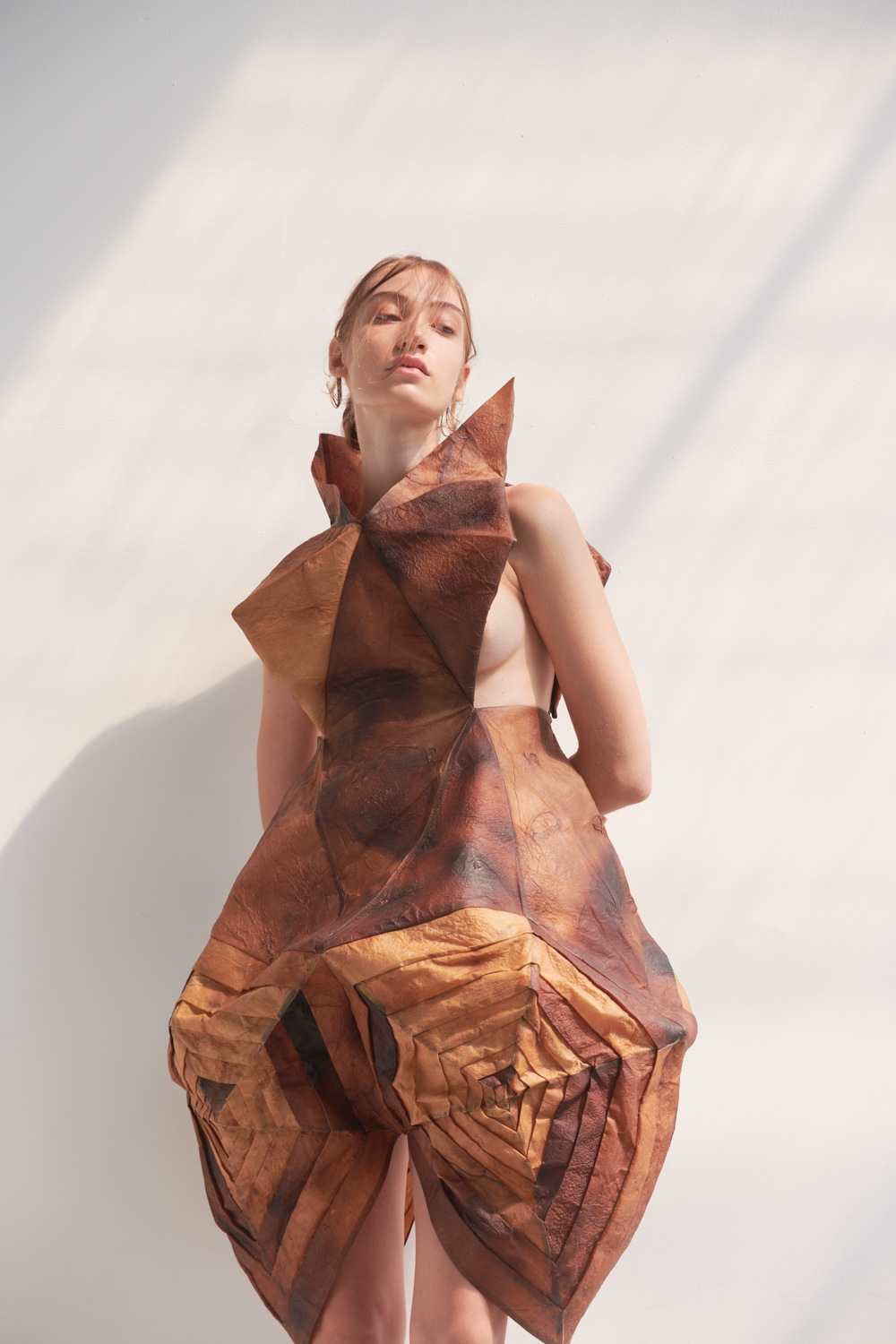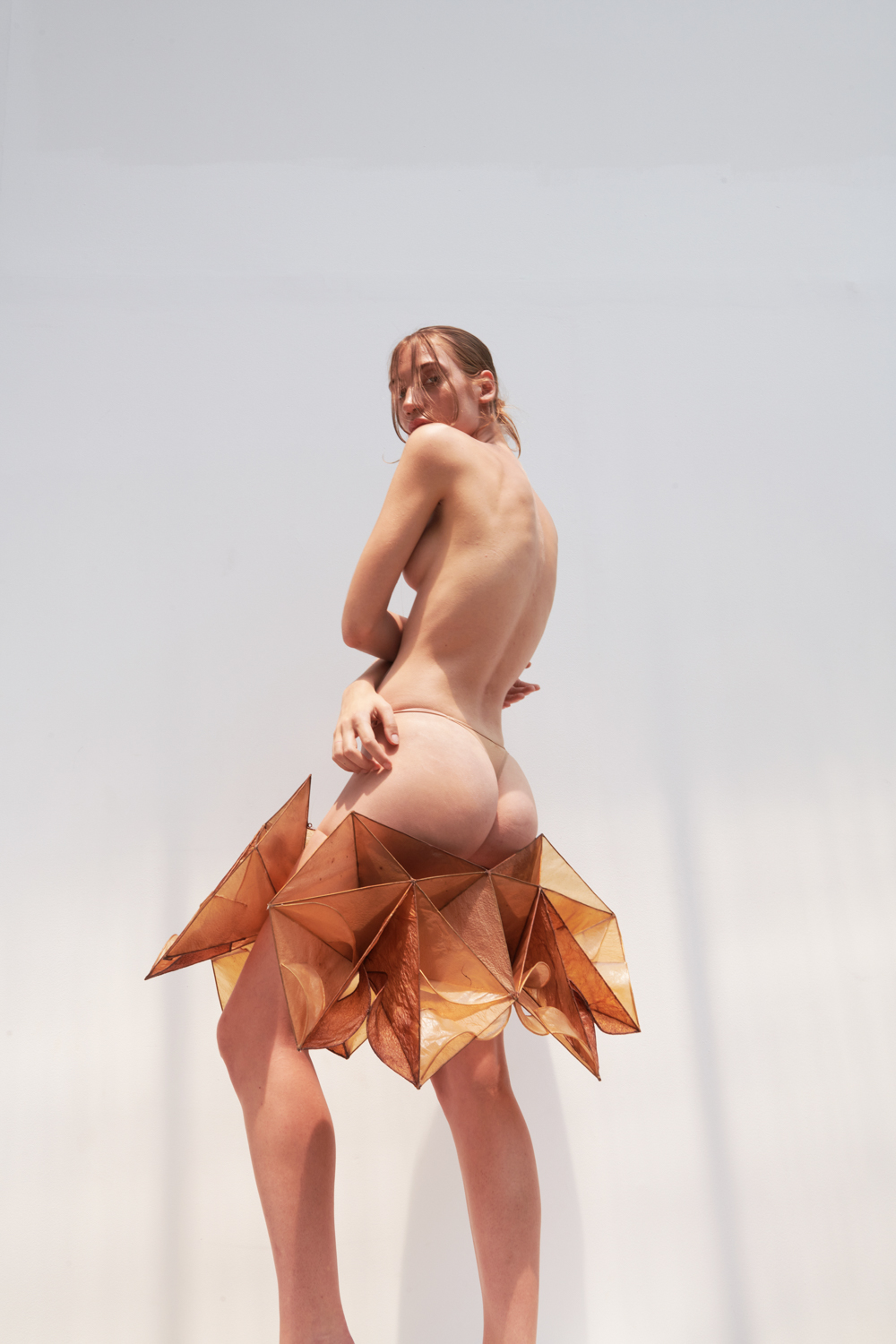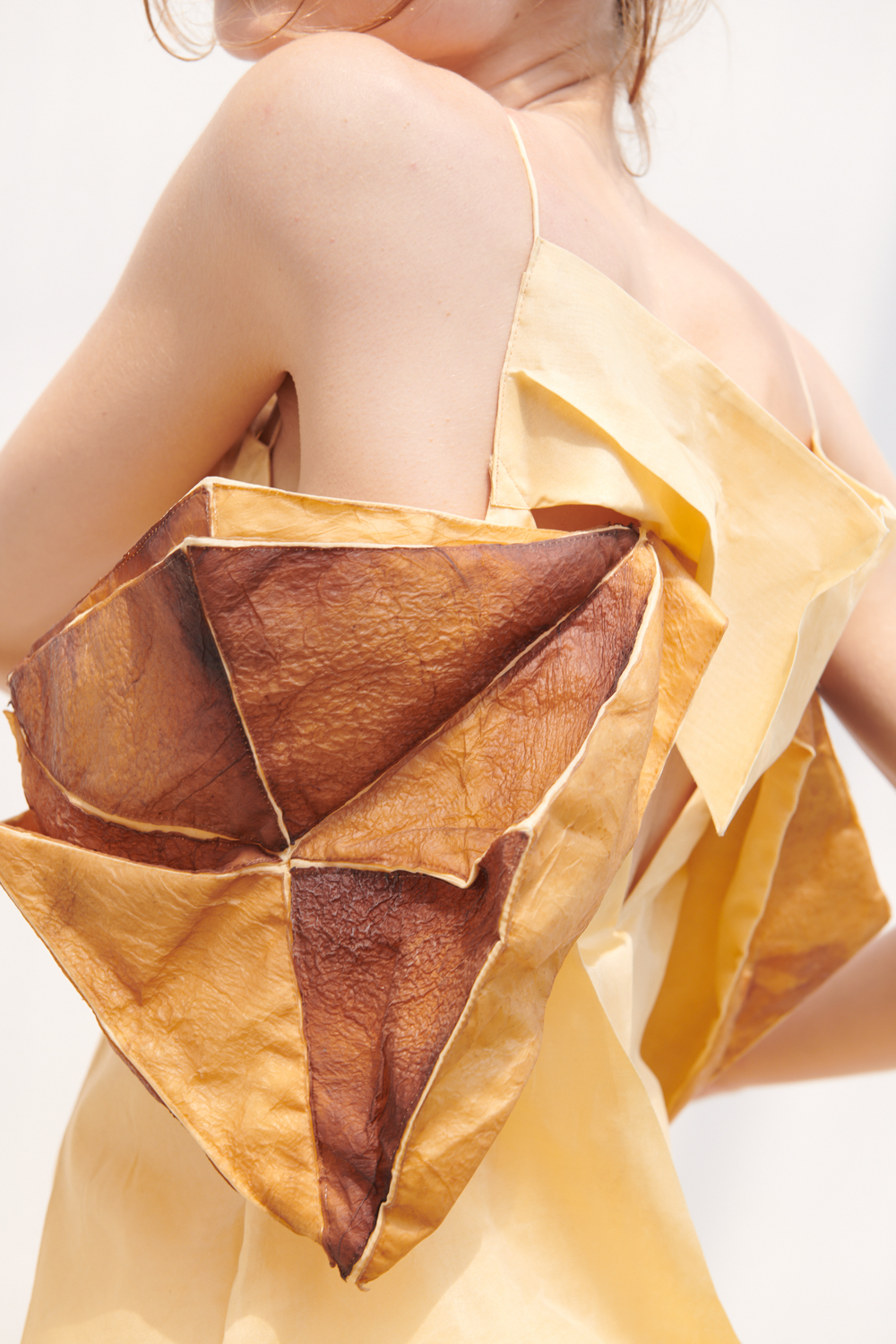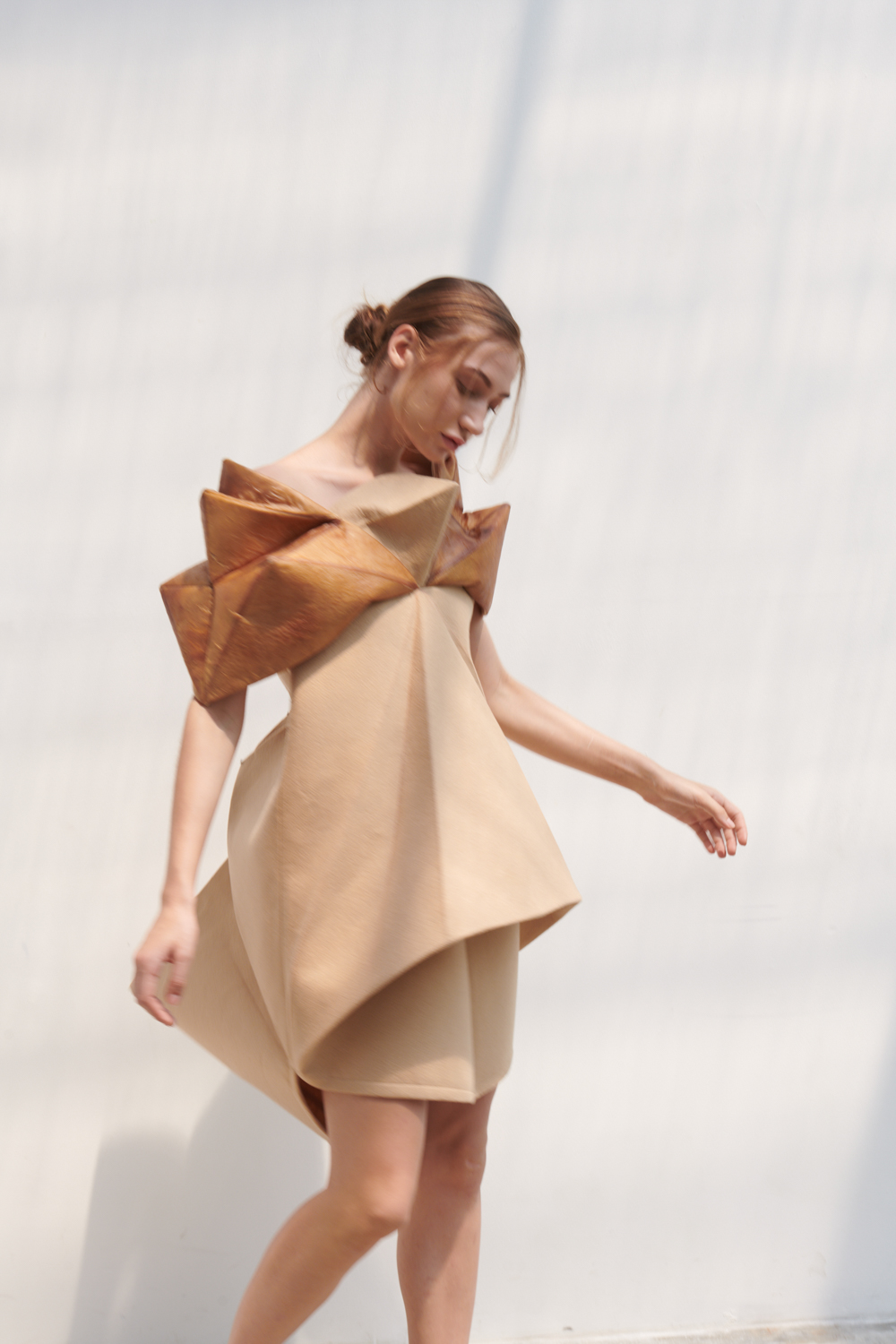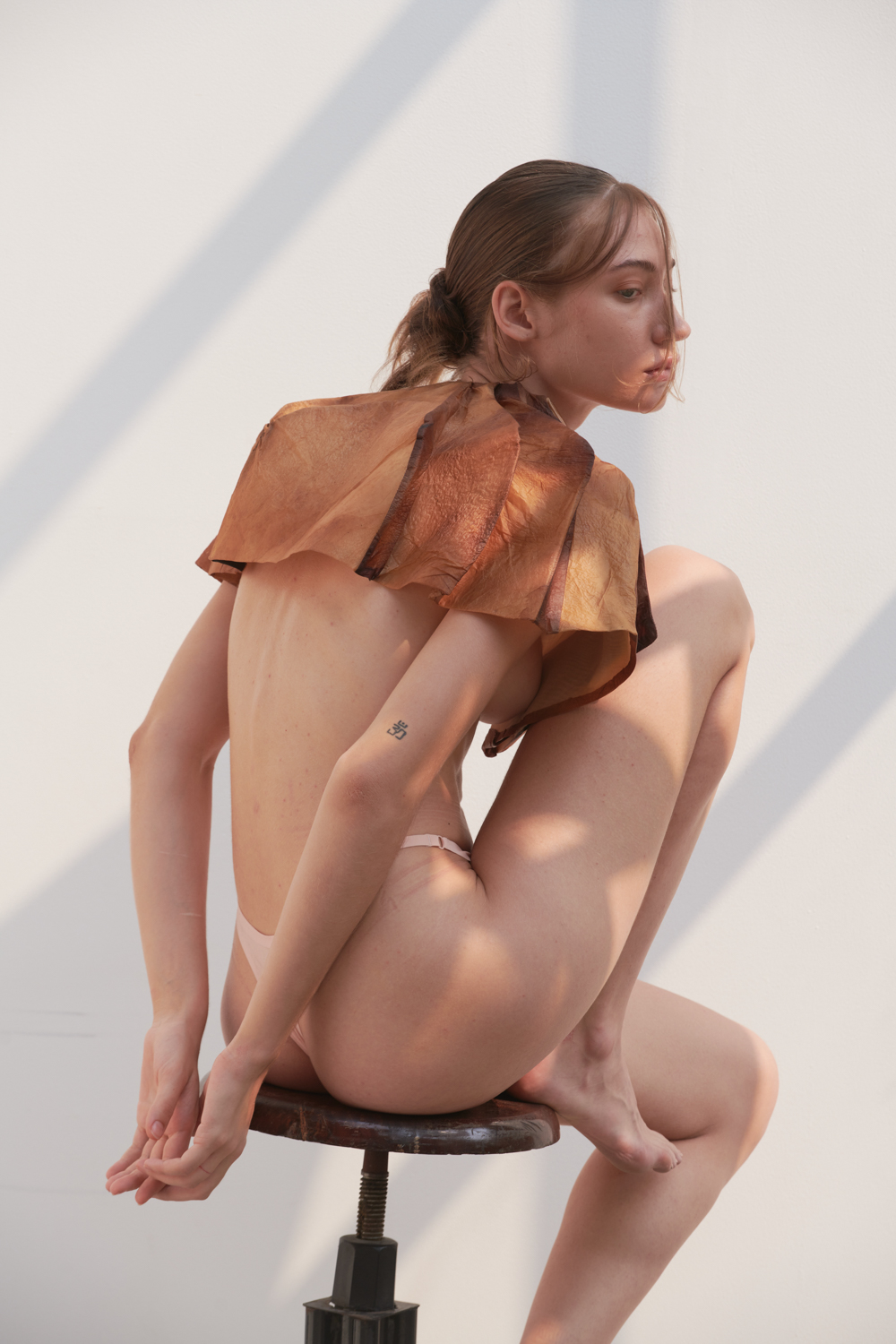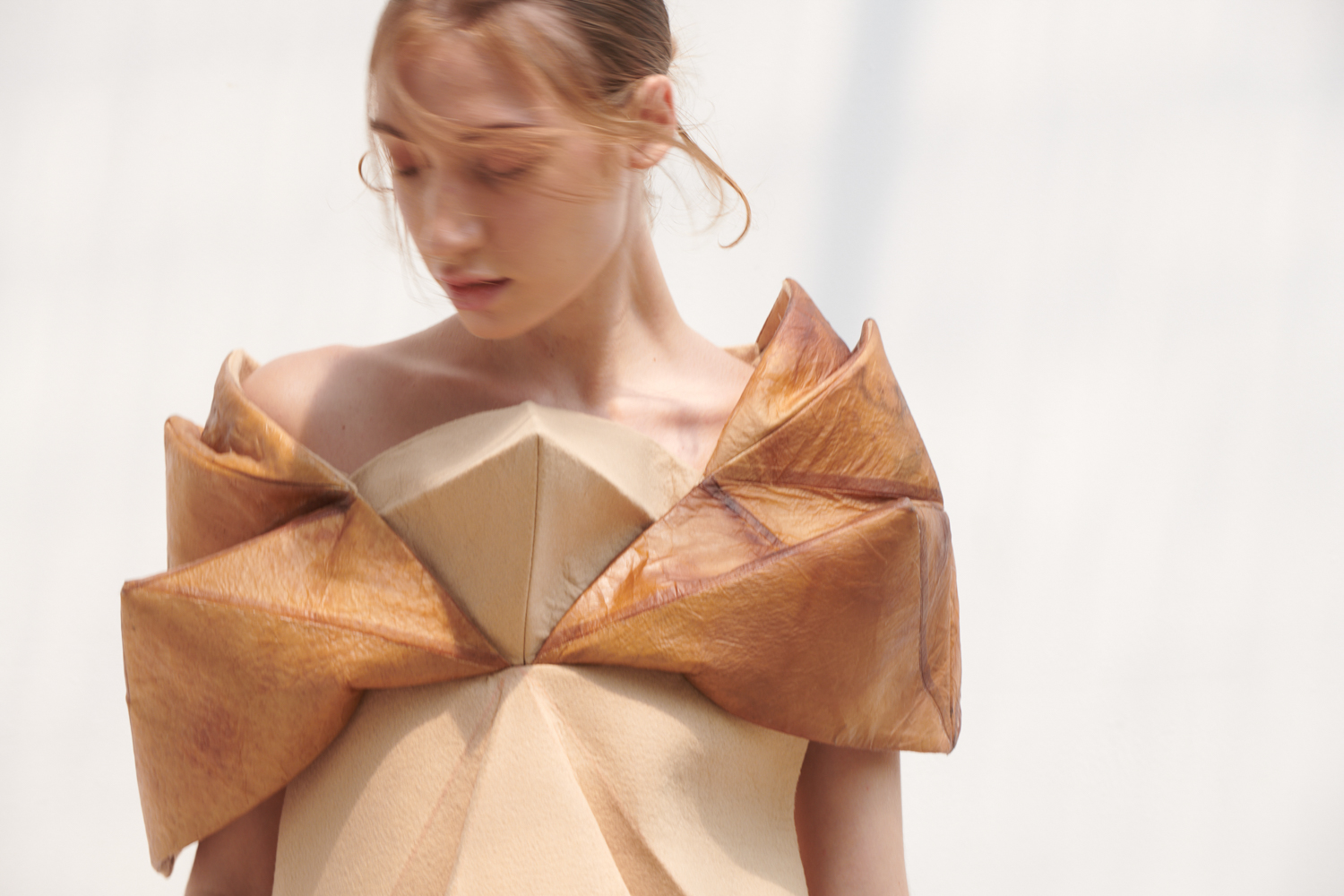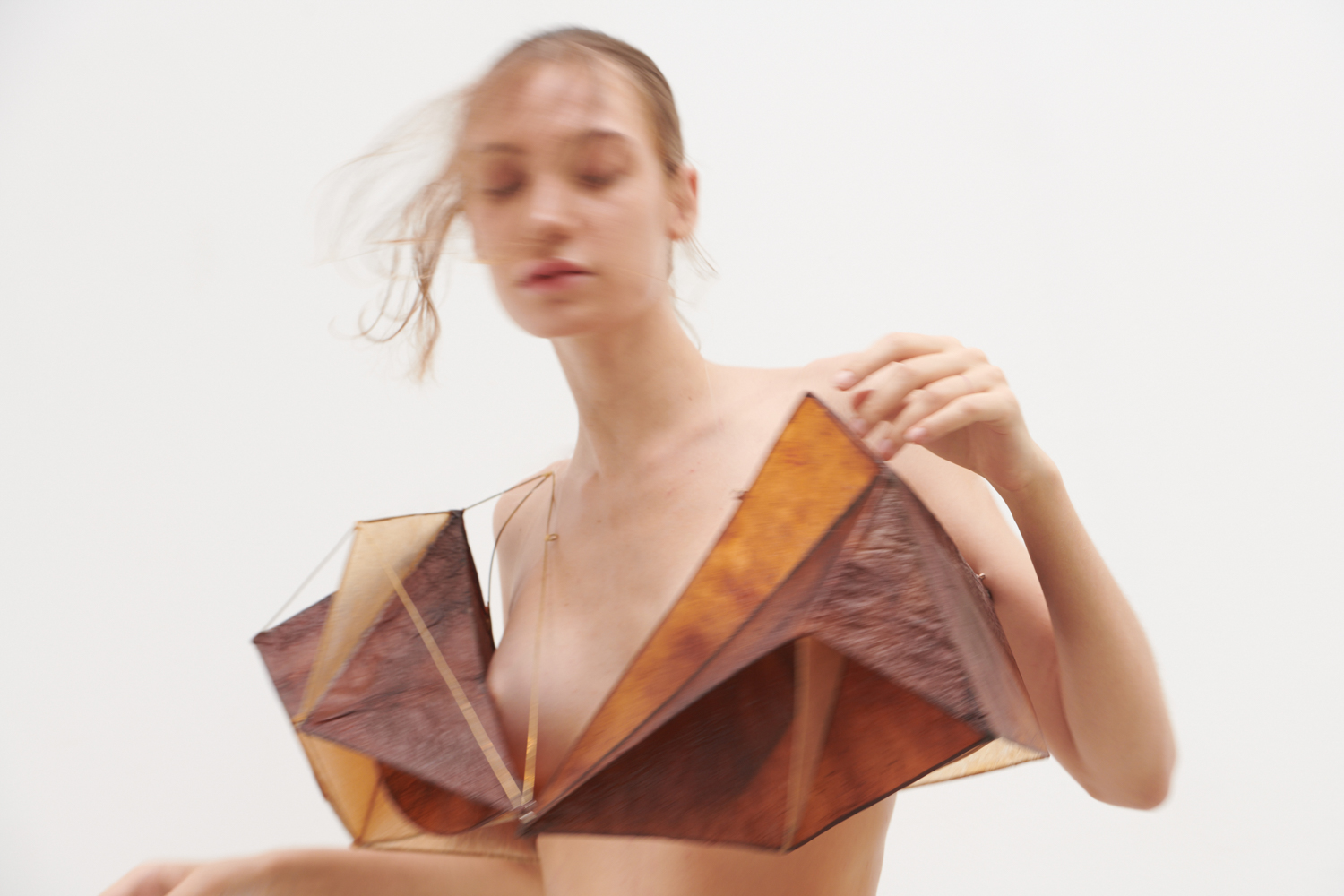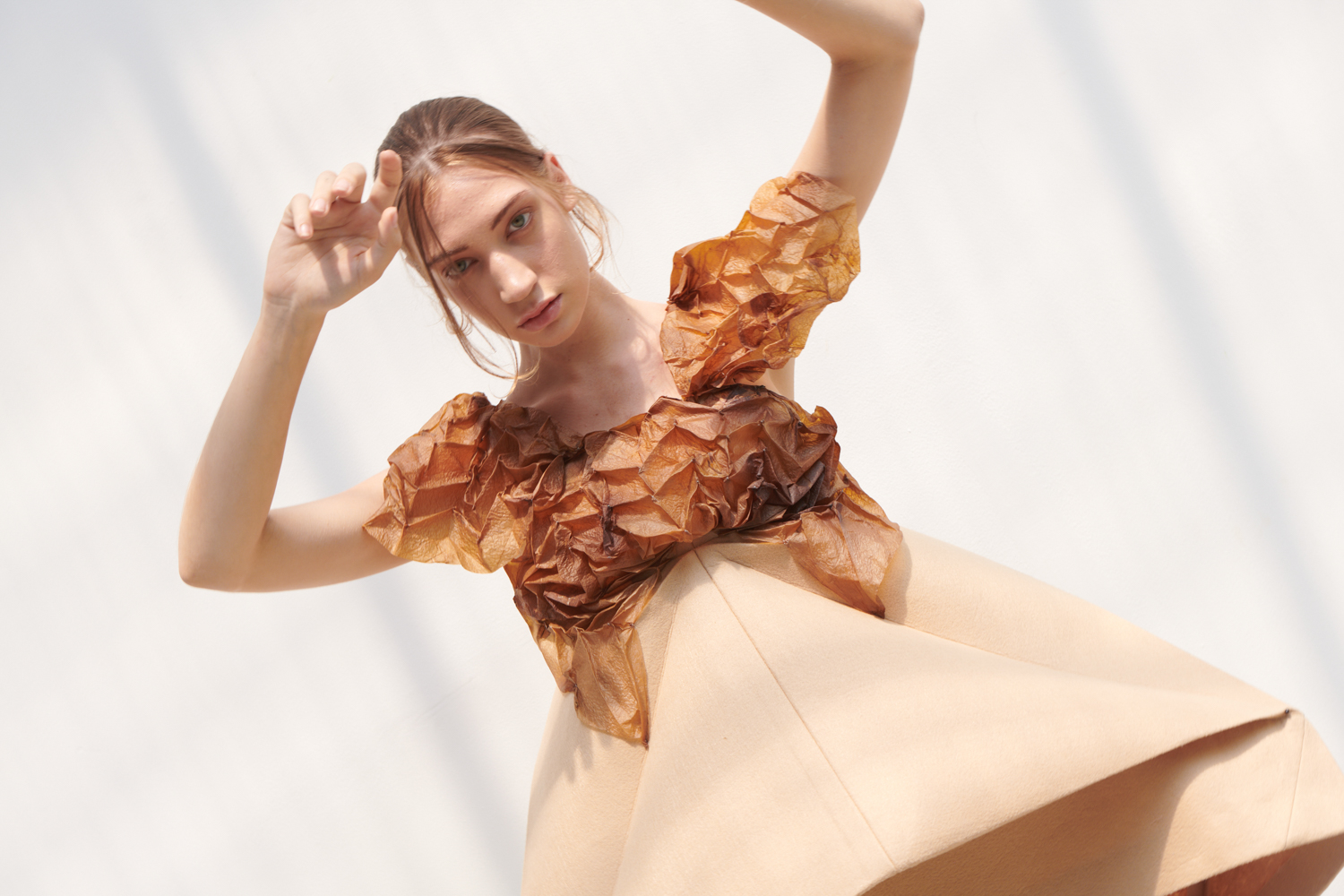ART4D SPEAKS WITH DR. KAJORNSAK NAKPAN ABOUT THE PROJECT “INNOVATIVE SYNTHESIZED MELANIN FROM SOIL AS TEXTILE SUBSTITUTE TO CREATE GARMENTS FOR THE FUTURE” THAT LEADS TO THE DISCOVERY OF BACTERIA IN SOIL THAT SHARES SOME PROPERTIES WITH MELANIN AND COULD BE DEVELOPED AS ALTERNATIVE TEXTILES
TEXT: PRATARN TEERATADA
PHOTO COURTESY OF KHAJORNSAK NAKPAN
(For Thai, press here)
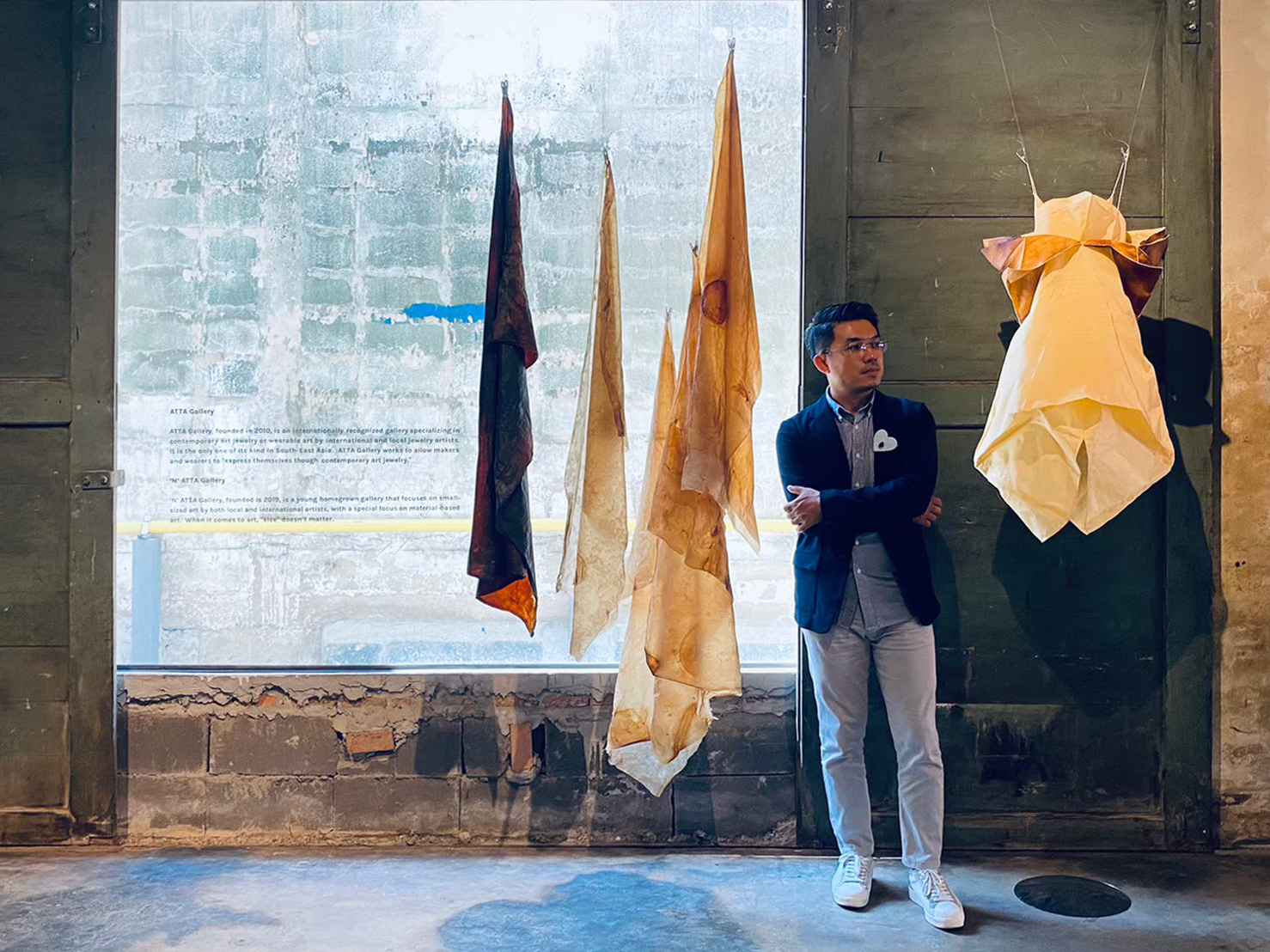
In the time when the world is in search of new innovations within the realm of natural materials, disciplines such as bioscience, aesthetics, and design are being integrated to bring both benefits and new possibilities to the future of creative industry. art4d had the chance to talk with Dr. Khajornsak Nakpan from Doctor of Philosophy Program in Design Arts, Faculty of Decorative Art, Silpakorn University. The topic of our conversation was ‘Innovative Synthesized Melanin from Soil as Textile Substitute to Create Garments for the Future’.
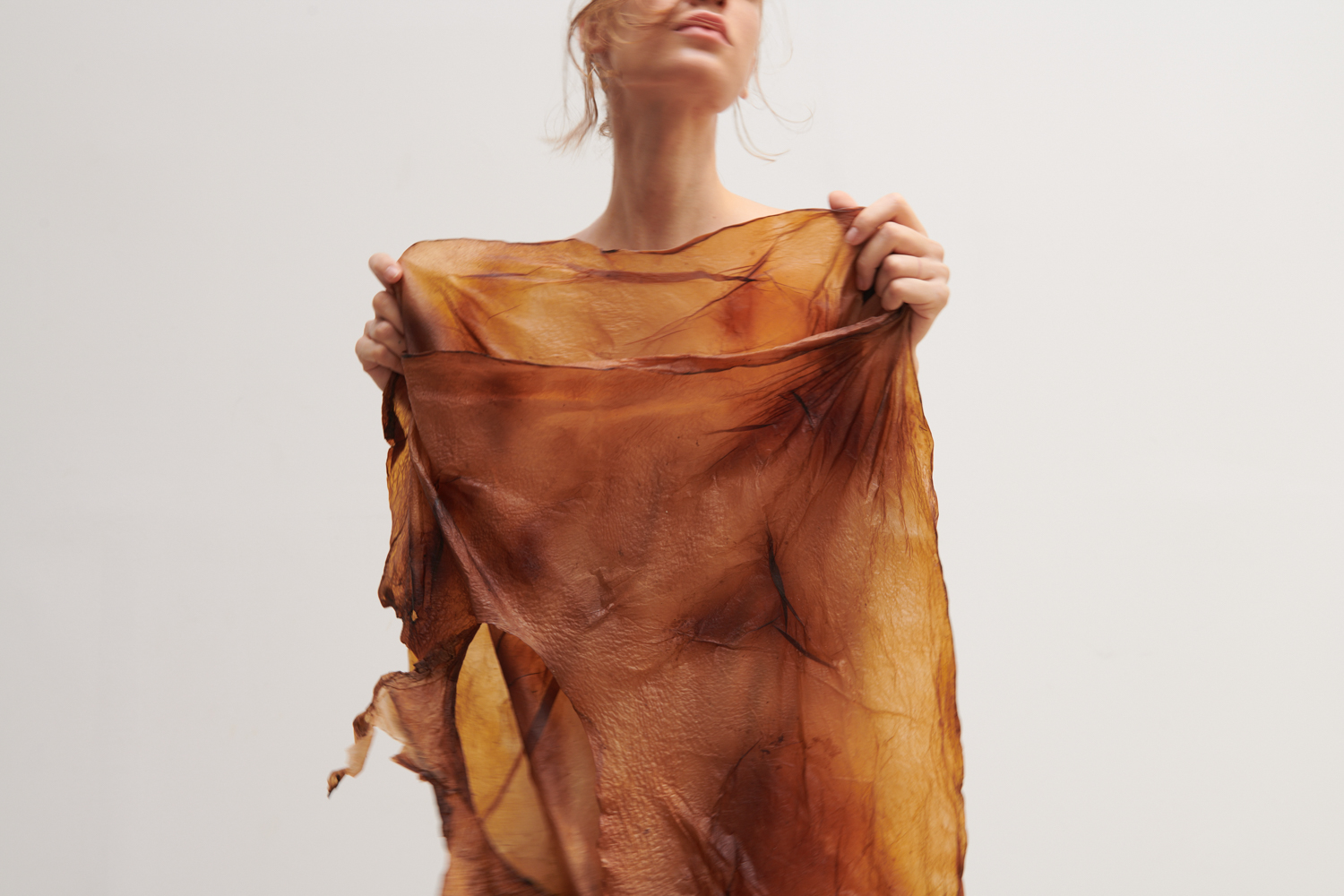
art4d: What sparked your interest in developing the project?
Khajornsak Nakpan: Curiosity and competitiveness, I suppose. I’ve always liked to observe the ways people dress and the things they buy no matter if they’re wearing my or my competitors’ products. I’m also interested in fashion trends and I like to analyze colors and styles that come out each season. I’m always curious about what clients like to buy or try on and why. Sometimes I think about it and find it amusing to consider why even if it’s a piece with the same color, from the same brand, people still want to try it out. They’re not confident until they get to try it on themselves. One of the main focuses of my design is the color of human skins. Apart from the clothing patterns, I think skin color is the answer that will help win over clients’ interest and loyalty.
Fast fashion is another starting point. Fast fashion affects consumer behaviors in the sense that people buy products faster, and products are made to be incredibly easy to access. Myriad designs that fast fashion have made available for mass consumption constantly stimulate people’s excessive need to buy to the point that it makes me wonder whether we actually want the products we purchase. When it’s fast and easy to have, it loses value quicker as well. Many of the industrially manufactured products are wasteful from the moment they’re made. They end up being thrown away. One of my wishes is to help put an end to or lessen fashion waste as much as possible. The materials I’ve come up with need to truly fulfill people’s basic needs. That’s pretty much the origin story of this project.
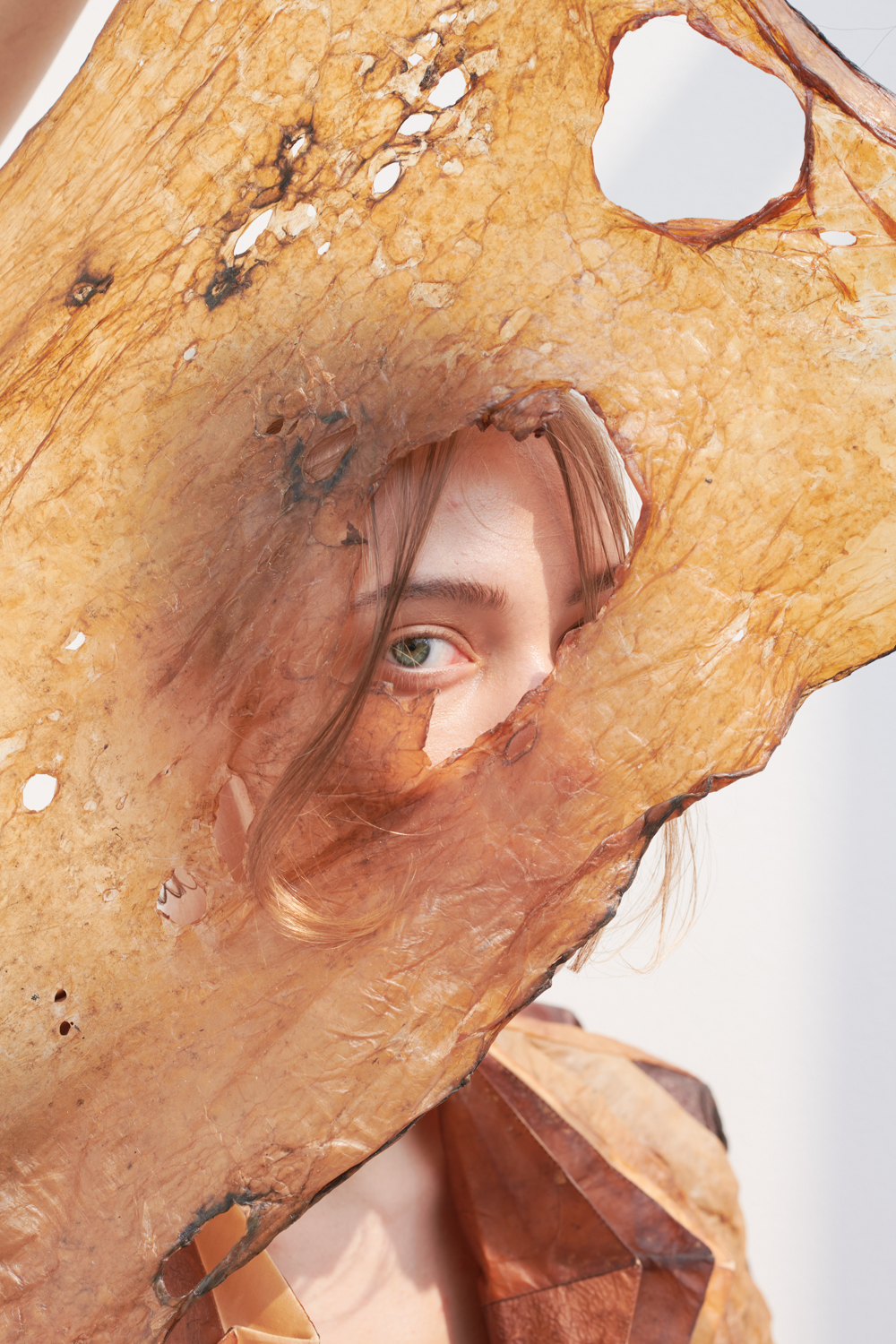
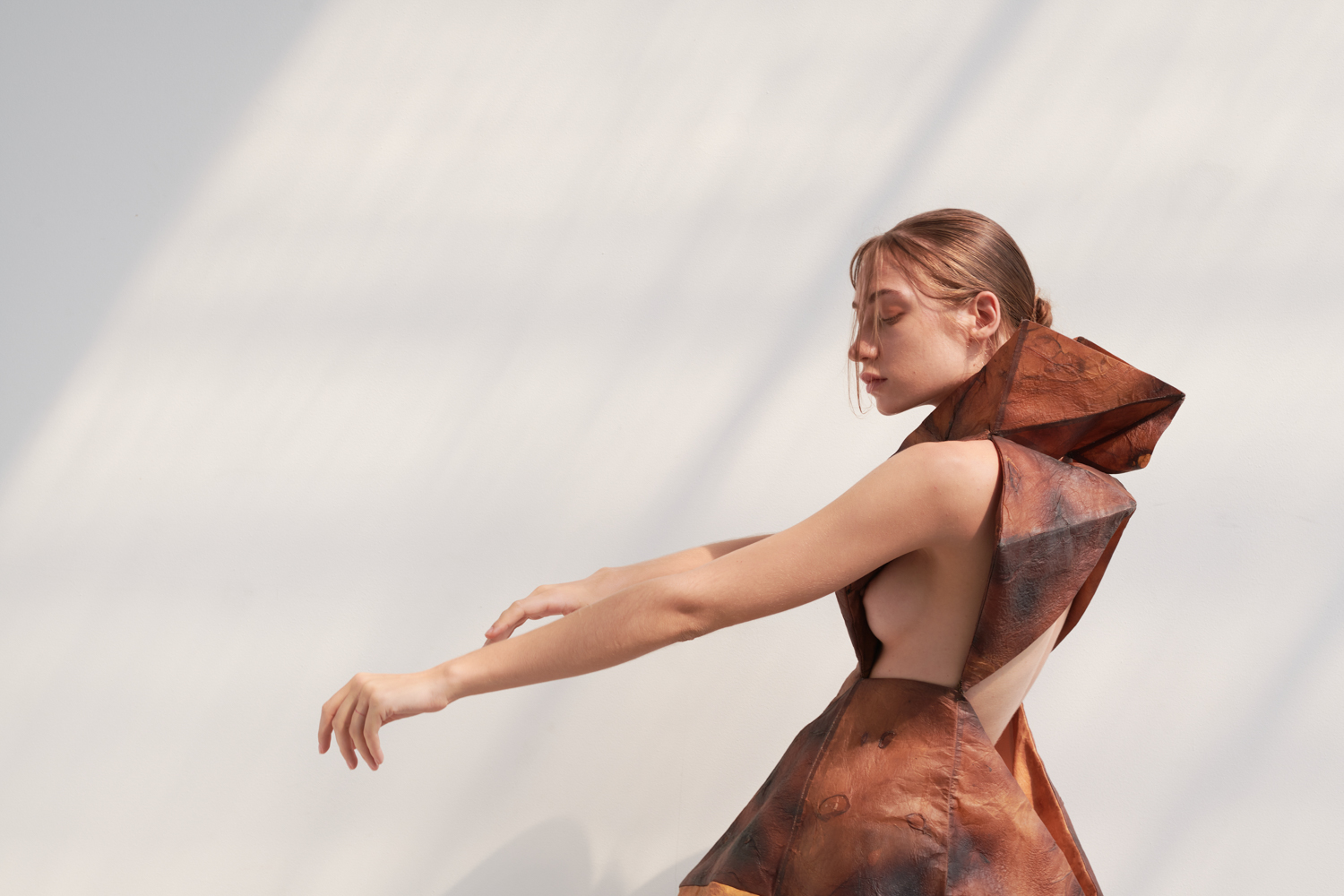
art4d: Have you been following global bio material movements, especially the ones related to the fashion industry?
KN: I always have, and one of the reasons is because I want to create something different. The use of microorganisms such as bacteria in the creation of alternative material innovations has grown continually and a lot of global brands have a keen interest in these new emerging developments.
One of the researches I’m particularly interested in and use as a guideline for my own project is the one carried out by Suzanne Lee. Her work uses microbial cellulose composed of bacteria grown in sweet green tea to fabricate new materials that can be used as a substitute to textile fibers. Another pivotal study is the one conducted by Tina Gorjanc who turned late designer Alexander McQueen’s DNA obtained from his hair into skin tissue, creating a material with a physical appearance akin to human skin. The material is used to create a collection of leather jackets, bags and backpacks.
art4d: Could you elaborate on the research you’ve been doing for this project?
KN: Before the soil and everything that you’ve seen, I initially wanted to dive into the area about human cells, but that’s already been done. I’ve become interested in human skin colors and found that melanin is what determines and classifies the shades of human skin color into 6 levels, from the lightest to the darkest. Then I drew a sample group of 20-25 year old people living in different regions of the country. The average skin color of Thai people ranges between level 3 and 4 out of the 6 levels.
In terms of innovating substitute materials, I’ve been experimenting on a lot of things, from using different types of tea for tissue culture and I’ve discovered that there are a myriad of microorganisms including Streptomyces, which share several qualities with melanin. I wrapped different types of soil, soaked them in boiled water and mix them with sweeteners. After 30-40 minutes, I took the soil out, added acetic acid and a culture medium, then I left it for 14-21 days. The substance floating in the water is then cultivated, sun-dried and the end result is this substitute material.
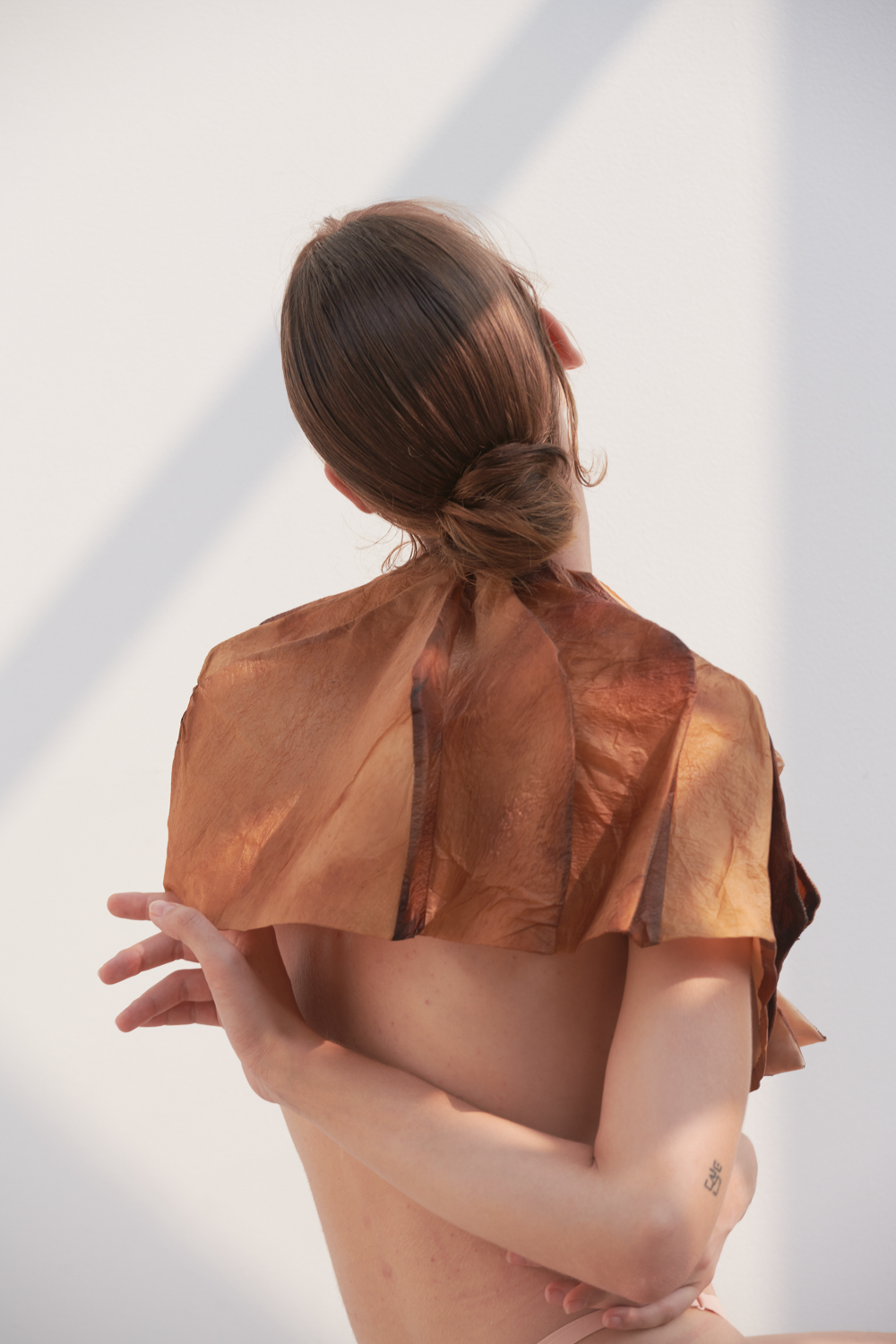
art4d: How can this finding be further developed?
KN: As a material, this is straight up a substitute material innovation because the soil has Streptomyces that can produce cellulose and melanin. It grants a great potential to make use of this massive amount of resource that we have and the ability to get rid of production and consumption wastes to achieve the stage of zero-waste. To top it all, it’s completely naturally disposable, making it an environmentally friendly material.
Business-wise, the material is distinctive because it renders a range of colors that is close to human skin colors. It can be used to suit each user’s skin tone. Additionally, soil is easy to find. Each type of soil found in each region has its own unique physical characteristics, including color. So, if we are able to use soil to make substitute materials that are varied in different localities, the materials will be reflective of the regions and local cultures from which they are made. It can be locally produced by people in the community, generating income without excessive transportation costs, meaning that it will naturally have a very low carbon footprint.
In terms of mentality, I think it’s time we become seriously aware of the importance of materials that will not destroy the environment and look into natural resources.

art4d: What are the new technologies in the design industry that you’ve been particularly interested in recently?
KN: Sun-Powered Chemistry. It’s the use of solar power to transform excess carbon dioxide back into a raw material with the help of chemical catalysis. It’s an innovation that can be pivotal to carbon dioxide and greenhouse gas reduction, and it’s applicable to both the textile and medical industry.

art4d: What is your next step?
KN: When I was working on my PhD., I had a chance to present a number of works and bodies of knowledge and I have received several awards from internationally renowned institutes, so the next step is to continue pursuing that while working on my design. I want the recognition to help our country realize the importance of substitute materials.
As for the material, it certainly needs further development to improve its potential. I’m planning to seek a partnership from the industrial sector so that it has a concrete possibility of becoming a commercialized product. What I ultimately want for this project is for soil to be developed into a profitable local wisdom and product.


